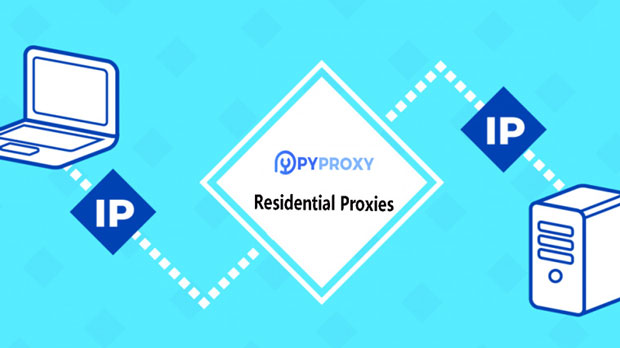How can proxy IP help organizations enable global market data capture?
In today's digital landscape, the ability to collect data on a global scale is essential for businesses aiming to expand their reach and enhance their competitiveness. However, accessing valuable market data from different regions and countries can be challenging due to restrictions, geo-blocking, and the sheer volume of information. proxy ips provide a powerful tool for businesses to bypass these limitations, enabling them to collect global market data seamlessly. By using proxy ips, companies can simulate browsing from different locations around the world, gathering region-specific data while maintaining privacy and security. In this article, we will explore how proxy IPs support enterprises in efficiently collecting market intelligence from diverse geographies. Understanding Proxy IPs and Their Role in Data CollectionProxy IPs serve as intermediaries between users and the websites they access, masking the user's original IP address and substituting it with one from a different location. This technology enables businesses to navigate through online barriers such as regional restrictions, access limits, and anti-scraping measures. By utilizing proxy IPs, enterprises can simulate the behavior of local users from various parts of the world, which is crucial for gathering market-specific data.For global market data collection, proxy IPs allow businesses to appear as if they are operating in different regions, helping them to obtain localized data that would otherwise be restricted. This is particularly important for businesses involved in competitive intelligence, pricing analysis, and market research. With proxies, companies can bypass geo-restrictions, monitor competitors' strategies, and gain insights into consumer behavior and trends in various geographical locations.Overcoming Geographical Barriers with Proxy IPsA significant challenge in global data collection is the geographical restrictions imposed by websites and platforms. Many online services block or restrict access to users from certain countries or regions, either to comply with local regulations or to prevent data scraping. Proxy IPs enable businesses to bypass these restrictions by masking their actual location and using an IP address from the target region. This allows enterprises to access otherwise restricted data, providing them with a broader and more comprehensive view of global markets.For example, a company operating in the United States may want to collect pricing data from e-commerce platforms based in Europe or Asia. Without proxy IPs, accessing these websites could be impossible or result in inaccurate data due to regional restrictions. By using proxy IPs from these specific regions, businesses can gather accurate data on product pricing, availability, and promotional offers, all of which are essential for market analysis and strategy development.Enhancing Data Collection Efficiency with Proxy NetworksThe efficiency of data collection can be significantly improved when enterprises use proxy networks. Proxy networks provide access to multiple IP addresses distributed across various locations. This allows businesses to scrape data from multiple sources simultaneously without triggering security mechanisms designed to detect and block automated scraping attempts.Using proxy networks, companies can rotate through different IP addresses to avoid being flagged by websites for suspicious activity. This is particularly beneficial for tasks such as price comparison, competitor analysis, and market trend monitoring. The ability to collect data at scale and speed is essential for businesses looking to stay ahead in a fast-paced global market. Proxy networks ensure that the data gathering process remains efficient and uninterrupted, even when accessing large volumes of information.Safeguarding Privacy and Security with Proxy IPsAnother significant advantage of using proxy IPs for global market data collection is the enhanced privacy and security they offer. When businesses collect data from different regions, they often risk exposing sensitive information or engaging in practices that may be seen as unethical, such as scraping proprietary data. Proxy IPs help mitigate these risks by masking the user's identity and providing a layer of anonymity.By using proxy IPs, enterprises can ensure that their data collection activities are discreet, protecting their business interests and preventing competitors or malicious entities from tracking their online behavior. This is particularly important in industries where confidentiality and competitive advantage are critical. Furthermore, proxies reduce the risk of being blacklisted by websites, as they prevent businesses from making too many requests from a single IP address, which could raise red flags.Leveraging Proxy IPs for Competitive IntelligenceProxy IPs play a crucial role in competitive intelligence, which is a vital aspect of global market data collection. With the help of proxies, businesses can gather data on competitors' pricing strategies, product offerings, promotions, and customer feedback across various markets. This information helps companies make informed decisions about their pricing models, product development, and marketing strategies.For instance, a company looking to expand into a new market can use proxies to track competitor activity in that region, assess customer sentiment through social media and review platforms, and monitor trends in consumer behavior. This allows the company to adapt its offerings to meet local preferences and expectations, ensuring a higher chance of success in the new market.Practical Applications of Proxy IPs in Market ResearchMarket research is one of the primary areas where proxy IPs provide value. Through proxies, businesses can access a wide range of data from various online platforms, including e-commerce sites, social media networks, and review websites. This data can then be analyzed to understand consumer preferences, track industry trends, and evaluate the performance of products and services in different regions.For example, a company may use proxy IPs to scrape data from online reviews and customer feedback across multiple countries. This can help them identify common issues, areas for improvement, and potential market gaps. Additionally, by monitoring competitor websites, businesses can gather insights into new product launches, promotional campaigns, and customer engagement strategies, all of which are valuable for staying competitive in the global market.Conclusion: Empowering Global Data Collection with Proxy IPsIn conclusion, proxy IPs offer a powerful solution for businesses looking to collect global market data effectively and efficiently. By overcoming geographical barriers, enhancing data collection speed and accuracy, ensuring privacy, and enabling competitive intelligence, proxy IPs empower companies to gather valuable insights from diverse regions around the world. Whether for market research, competitor analysis, or pricing strategy optimization, proxy IPs are an indispensable tool for businesses aiming to thrive in the global marketplace.Through the strategic use of proxy IPs, enterprises can expand their data collection capabilities, stay ahead of market trends, and make more informed decisions that drive success in an increasingly competitive and interconnected world.
2025-01-17
























































